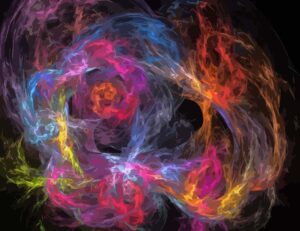
The human body remains one of the greatest mysteries, with its complex systems and capabilities continuously baffling the medical community. While common ailments have been studied extensively, there are extraordinary medical conditions that push the boundaries of our understanding, presenting both challenges and opportunities for medical science. Here are 15 such conditions that intrigue and perplex researchers and medical professionals alike.
1. Fibrodysplasia Ossificans Progressiva (FOP)

Fibrodysplasia Ossificans Progressiva (FOP) is a rare genetic disorder that causes soft tissues, including muscles, tendons, and ligaments, to gradually turn into bone outside of the skeleton. This process of ossification often begins in childhood and progresses throughout the individual’s life, severely restricting movement. FOP challenges our understanding of tissue regeneration and differentiation, offering unique insights into bone formation and growth.
2. Progeria (Hutchinson-Gilford Syndrome)

Progeria, or Hutchinson-Gilford Syndrome, is a rare genetic condition characterized by accelerated aging in children. Symptoms resemble aspects of aging at a very young age, including wrinkled skin, hair loss, and cardiovascular problems. Progeria offers a window into the genetic and molecular mechanisms underlying aging and age-related diseases, providing valuable information that could extend to the broader population.
3. Stone Man Syndrome (Myositis Ossificans Progressiva)

Stone Man Syndrome, formally known as Myositis Ossificans Progressiva, is similar to FOP in that it involves the abnormal ossification of muscle tissue. However, in this condition, the ossification is often triggered by injury or trauma, leading to bone growth within muscles, tendons, and ligaments. This condition provides crucial data on how the body responds to injury and the pathways that lead to abnormal healing processes.
4. Alien Hand Syndrome

Alien Hand Syndrome is a rare neurological disorder where one hand functions involuntarily, with the person having no control over its movements. This condition often arises after brain surgery, stroke, or infections that affect the brain. It challenges our understanding of brain organization and the neural pathways that control voluntary movements, shedding light on the complexities of brain function and autonomy.
5. Aquagenic Urticaria

Aquagenic Urticaria is an extremely rare condition where water causes the skin to break out in painful and itchy hives. This condition can be triggered by rain, sweat, tears, or even bathing, making daily life exceedingly difficult. The exact cause remains unknown, challenging our understanding of allergies and the skin’s reaction to common substances.
6. Foreign Accent Syndrome

Foreign Accent Syndrome is a rare speech disorder that causes a sudden change to speech so that a native speaker is perceived to speak with a foreign accent. This condition is usually the result of a brain injury, such as a stroke or head trauma. It offers valuable insights into the brain’s language centers and the neural mechanisms underlying speech patterns and accents.
7. Cotard’s Syndrome

Cotard’s Syndrome is a rare psychological condition where individuals believe they are dead, do not exist, are putrefying, or have lost their blood or internal organs. Often associated with severe depression, schizophrenia, and neurological conditions, it challenges our understanding of consciousness, identity, and the brain’s interpretation of the self.
8. Exploding Head Syndrome

Exploding Head Syndrome is a sleep disorder that causes individuals to hear loud imagined noises, such as an explosion, gunshot, or cymbal crash, as they are falling asleep or waking up. These sounds are not real and have no external source. This condition highlights the complexities of sleep disorders and the brain’s activity during sleep transitions.
9. Hyperthymesia (Highly Superior Autobiographical Memory)

Hyperthymesia is a condition characterized by an extraordinarily detailed autobiographical memory. Individuals with hyperthymesia can recall almost every day of their lives in great detail, including trivial details from years past. This condition raises important questions about memory formation, storage, and retrieval, challenging existing models of memory in the human brain.
10. Synesthesia

Synesthesia is a condition where one sense is simultaneously perceived by one or more additional senses. For example, someone might see colors when they hear music or taste flavors when they hear certain words. Synesthesia challenges traditional views on sensory processing and neural pathways, offering insights into the interconnectedness of sensory experiences.
11. Auto-Brewery Syndrome

Auto-Brewery Syndrome is a rare condition where the digestive system becomes its own brewery, fermenting ingested carbohydrates into alcohol within the body. This can lead to alcohol intoxication without consuming any alcoholic beverages. Understanding this condition can offer insights into gut flora, metabolism, and the complexities of digestive processes.
12. Morgellons Disease

Morgellons Disease is a controversial and poorly understood condition where individuals believe they have fibers or foreign particles emerging from their skin, accompanied by skin lesions and a variety of other symptoms. The nature of the disease is debated, with some attributing it to physical illness and others to psychological factors. This condition challenges the intersection of dermatology and psychiatry, highlighting the complexities of diagnosing and treating conditions with both physical and psychological components.
13. Congenital Insensitivity to Pain

Congenital Insensitivity to Pain is a rare condition where individuals cannot feel physical pain due to the absence or malfunctioning of specific nerve fibers. While it may seem advantageous, the inability to feel pain can lead to severe injuries and health issues. This condition provides invaluable insights into the mechanisms of pain and the body’s warning system.
14. Alice in Wonderland Syndrome

Alice in Wonderland Syndrome is a neurological condition that affects perception, causing objects to appear smaller (micropsia), larger (macropsia), closer, or farther away than they actually are. Often associated with migraines, brain tumors, and the use of psychoactive drugs, it provides a unique perspective on how the brain processes visual information and constructs reality.
Extraordinary Medical Conditions Push the Boundaries of Medical Science

These extraordinary medical conditions not only challenge our understanding of human health but also push the boundaries of medical science. They highlight the complexity of the human body, the resilience of those who live with these conditions, and the ongoing quest for knowledge within the medical community. As research continues, each condition offers a unique opportunity to explore uncharted territories in health and science, promising advancements in treatment and a deeper understanding of the human condition.
Catherine is a tech-savvy writer who has focused on the personal finance space for more than eight years. She has a Bachelor’s in Information Technology and enjoys showcasing how tech can simplify everyday personal finance tasks like budgeting, spending tracking, and planning for the future. Additionally, she’s explored the ins and outs of the world of side hustles and loves to share what she’s learned along the way. When she’s not working, you can find her relaxing at home in the Pacific Northwest with her two cats or enjoying a cup of coffee at her neighborhood cafe.
Leave a Reply